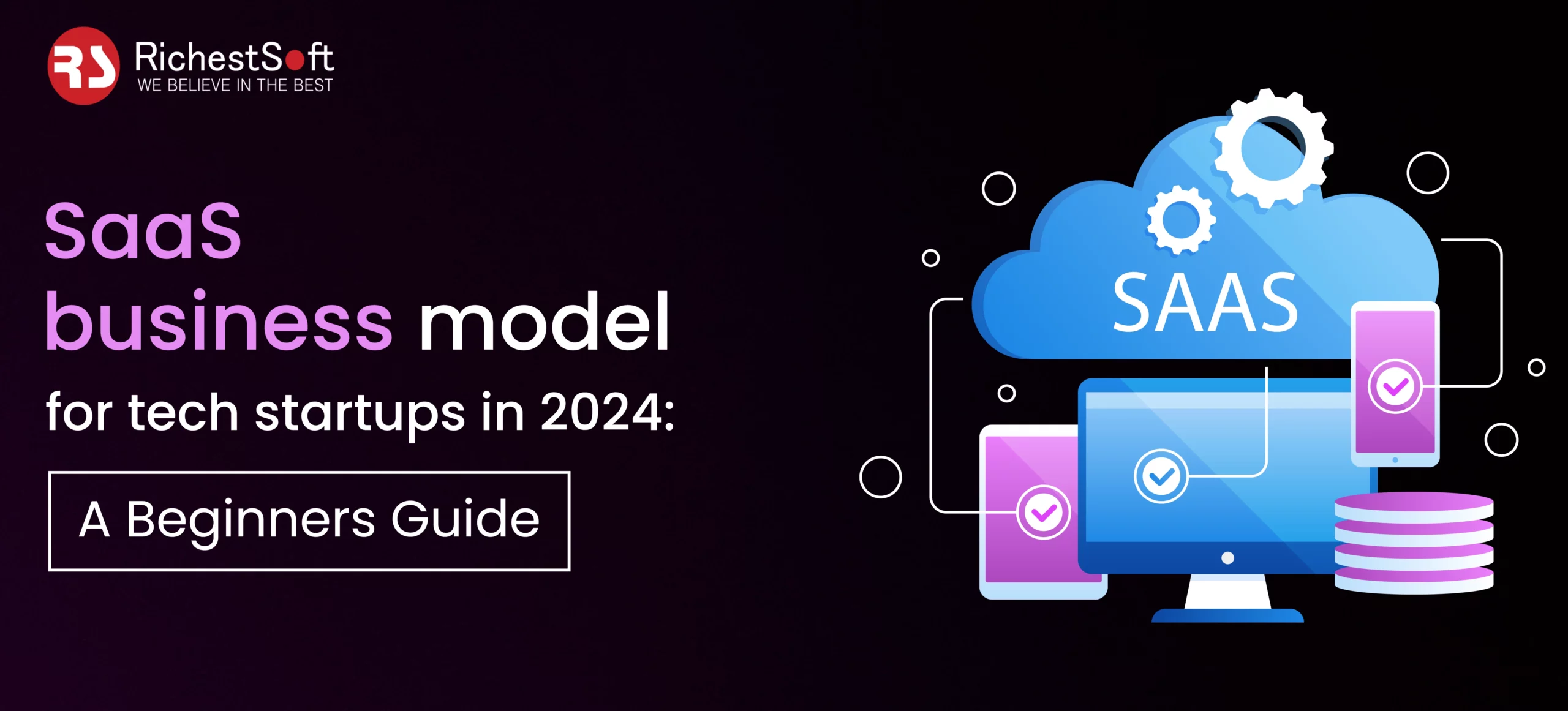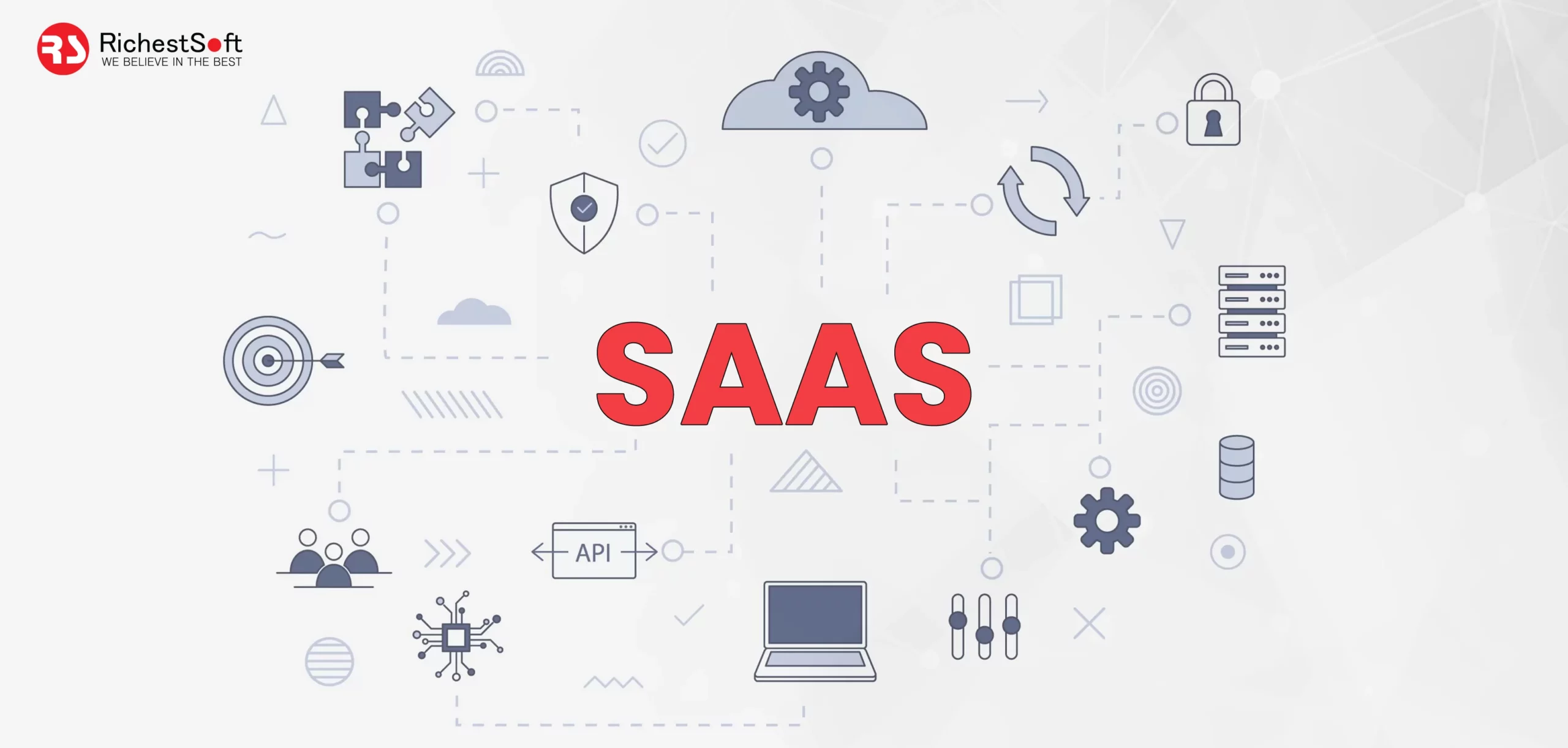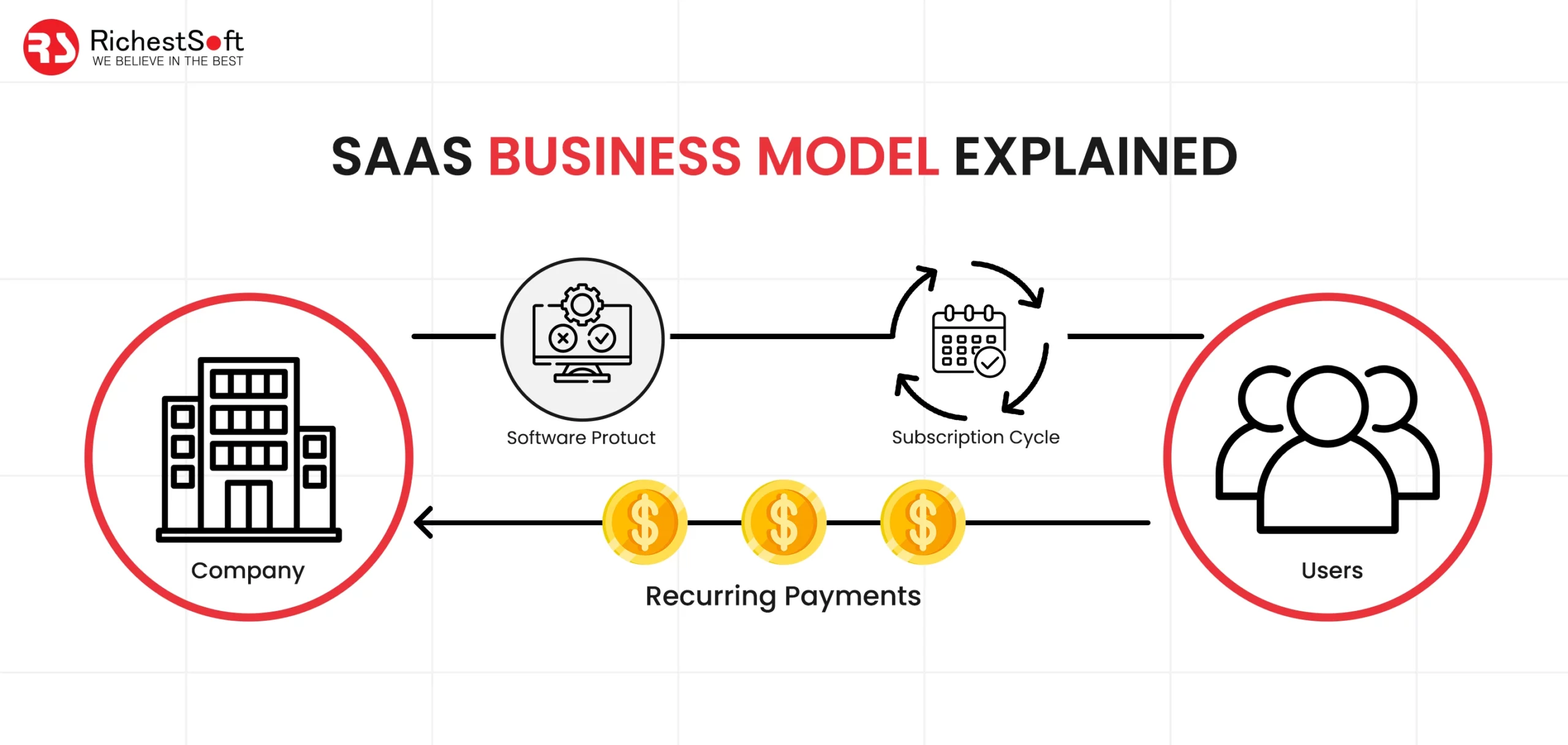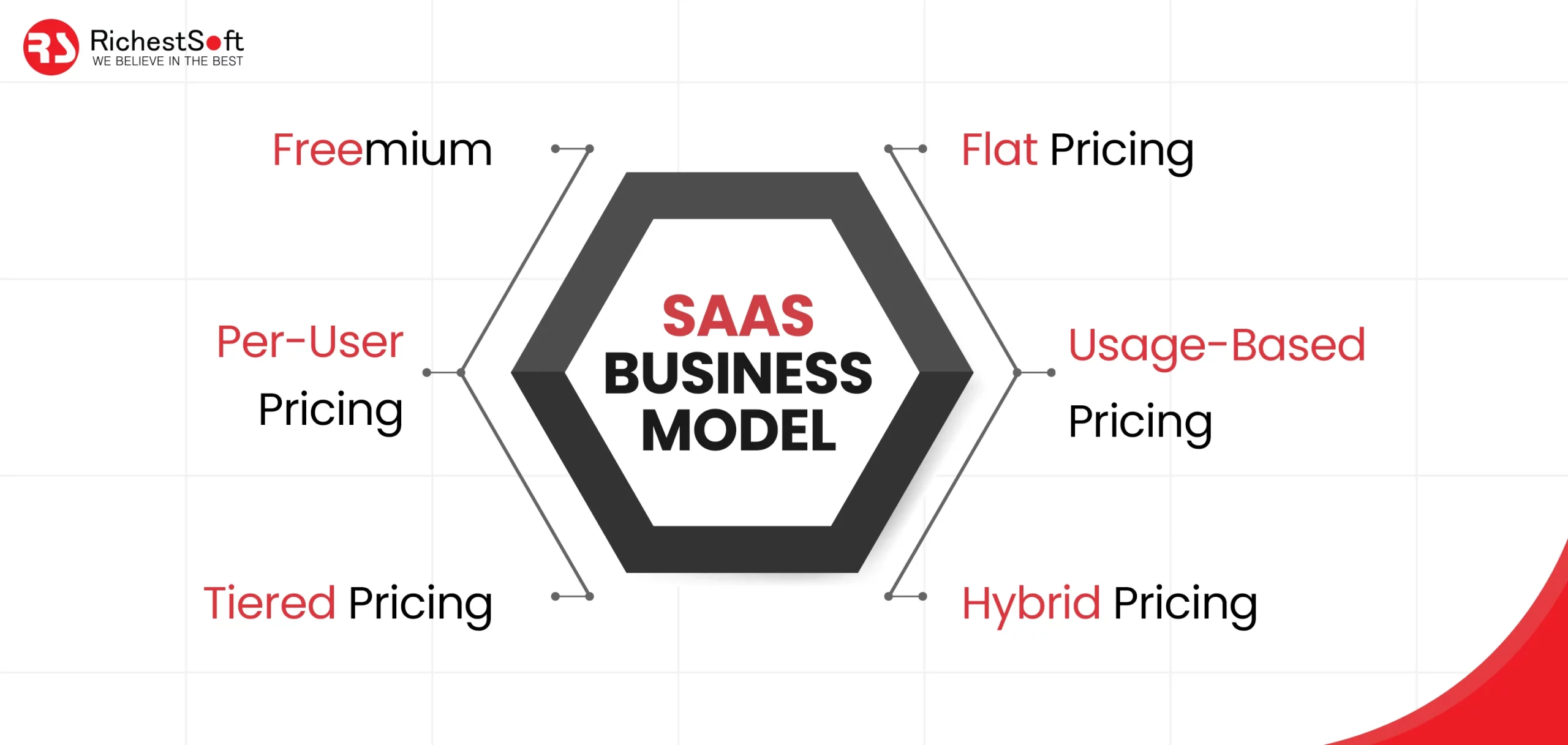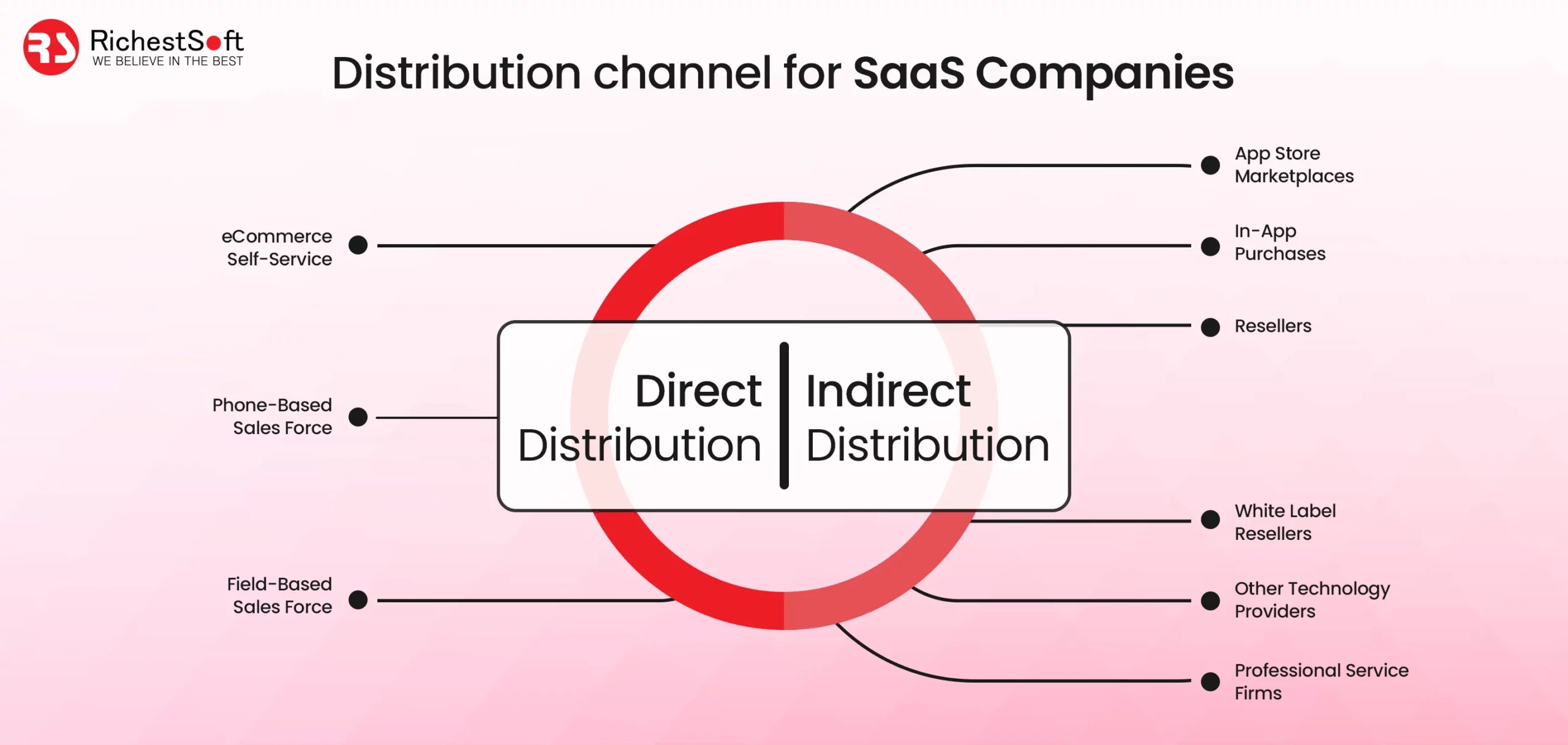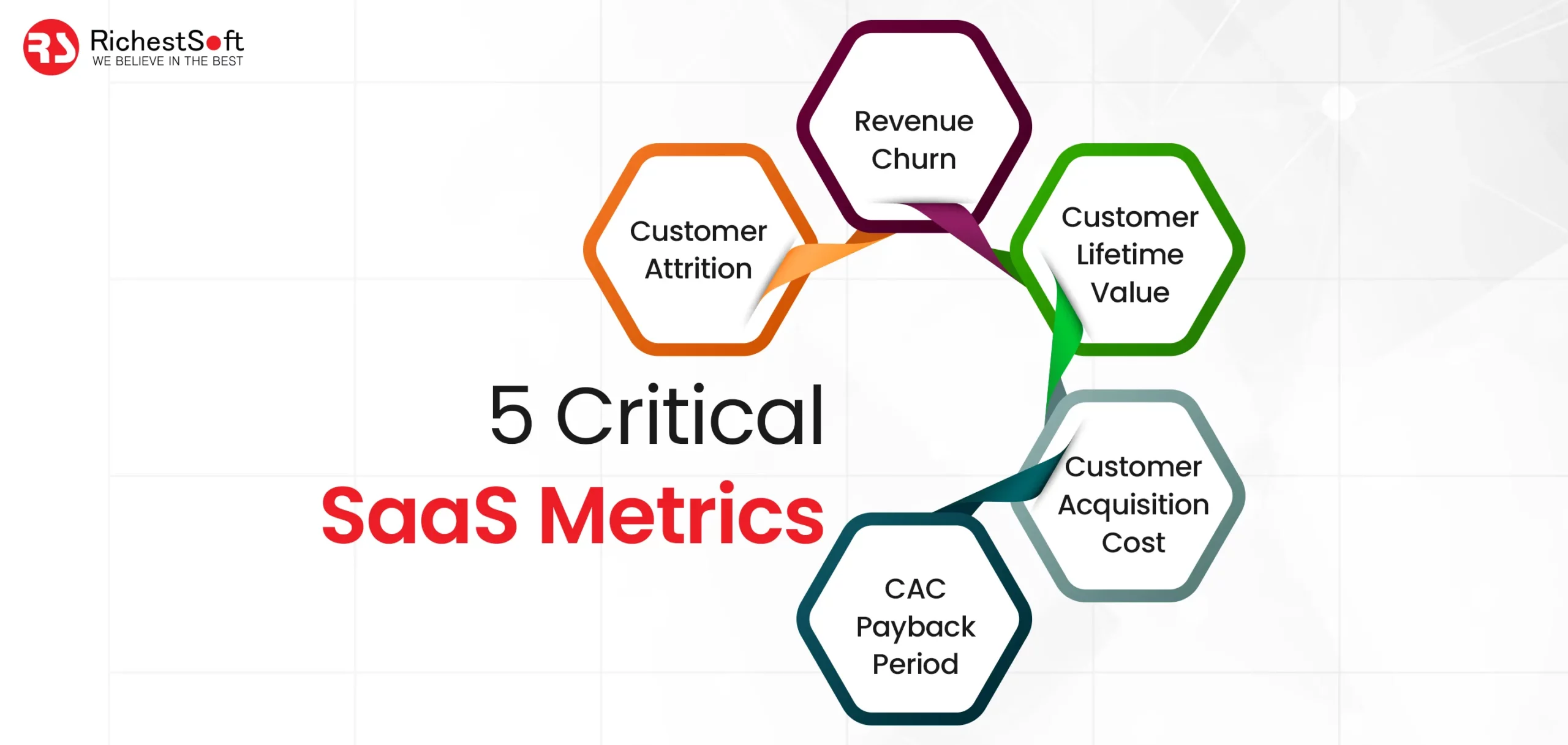SaaS business model for tech startups in 2024: A Beginners Guide – The SaaS industry has experienced remarkable growth, surpassing a valuation of $195 billion as of 2023. Over the past seven years, this sector has expanded by a staggering 500%, solidifying its position as a pivotal technology driving business success. Notably, SaaS is deemed the cornerstone of technological advancement for businesses, holding significant importance in ensuring operational efficiency and growth.
In terms of global presence, the United States leads the SaaS landscape, boasting approximately eight times more SaaS companies than any other country. Furthermore, within the IT security market, cloud security stands out as the fastest-growing segment, indicating the increasing reliance on cloud-based solutions to address security needs.
In recent years, numerous new SaaS app development company enterprises have surfaced, with several achieving unicorn status. The revenue generated by collaboration and productivity tools like Zoom and Microsoft Teams experienced a notable surge, especially in the wake of the remote work trend, which continues to prevail.
You might find yourself contemplating the inception of your own SaaS venture. You might have conducted extensive research, conceived an enticing SaaS business concept, or even meticulously outlined the entire business strategy.
However, a critical question arises: Have you established a comprehensive SaaS business model? Ultimately, it serves as the linchpin for your business’s sustainability, ensuring continuous operation, profitability, and resilience against economic fluctuations.
What defines a SaaS business model?
It delineates the specific procedures, expense structures, and income streams inherent to a SaaS enterprise. This model operates cloud-based software accessible via web browsers and generates revenue primarily through subscription charges.
Given its online hosting, maintaining a SaaS company demands a high level of expertise, particularly in areas such as development and design. Staying abreast of industry trends becomes imperative for the team.
Yet, the advantageous facet emerges when your foothold in this realm strengthens. The resilience ingrained within the SaaS business model acts as a safeguard against potential obstacles across the business’s lifespan.
Who knows, your SaaS enterprise model might organically evolve into a distinctive niche.
What categories do SaaS business models fall into?
The SaaS landscape encompasses diverse cloud-based enterprise models that drive innovation and revenue.
SaaS Revenue Model
At the heart of SaaS success lies the revenue model, instrumental in predicting and fostering business triumph. This model meticulously defines where a product is positioned in the market and shapes its pricing architecture. By comprehending the buyer’s identity and preferences, this framework empowers sellers to tailor laser-focused marketing strategies, ensuring a resonance with their target audience. Within the SaaS revenue model, various types thrive, each adding a distinct facet to the business’s revenue generation.
Affiliate Revenue Model
The Affiliate Revenue Model stands out for its capacity to not only generate income through content views but also leverage strategic affiliate links to channel sales to external websites. The pivotal strength of this model lies in its ability to strike a delicate balance, ensuring an optimal number of advertisements without overwhelming the audience. Curating a select few ads becomes crucial, ensuring a positive and enriching user experience.
Ad-Based Revenue Model
For SaaS business owners seeking to capitalize on advertising revenue, building a substantial audience becomes paramount. This involves astute strategies such as direct sales of ad space to specific companies or leveraging localized ad networks like Google AdSense to procure targeted advertisements.
Channel Sales
The Channel Sales model pivots the focus from direct sales to proficiently marketing products or services on behalf of clients. Leveraging multiple channels for promotion and sales significantly expands the market reach, unlocking new potentials for growth.
Freemium Model
The Freemium SaaS model allows customers to experience a product’s functionality for free before committing financially. This trial phase plays a pivotal role in fostering customer confidence in the product’s capabilities and value proposition, often resulting in potential conversions.
Direct Trade
Under the Direct Trade SaaS model, products are directly delivered to end-users, eliminating the need for intermediaries. However, this strategy necessitates significant investments in building and maintaining an efficient sales team to drive sustainable revenue growth.
Subscription Revenue SaaS Model
A cornerstone of major industry players like Amazon Prime and Netflix, the Subscription Revenue Model charges customers a recurring fee for continued access to services or products. This model establishes a steady revenue stream and nurtures long-term customer loyalty.
SaaS Pricing Model
The SaaS Pricing Model is crucial in establishing the pricing framework for all offered products and services. It acts as a significant tool for prospective customers, aiding them in making informed choices, and simultaneously grants entrepreneurs a competitive edge by facilitating market research. Delve into these proven pricing tactics for SaaS to refine your business model and elevate your profitability.
Fixed Rate
This model entails offering a standardized rate for a service, typically on a monthly or yearly basis. It’s important to note that initial offerings might lack customization options. However, as your platform gains traction, adjustments to the pricing model can be implemented, accommodating additional features in later stages.
Tiered Pricing
This approach involves offering multiple pricing tiers based on the range and scope of services included in various plans. When structuring these plans, customization should be a key consideration, aligning them with the unique needs of different customer segments.
An effective strategy to attract users, particularly for startups, is to introduce a free or low-cost plan, enticing potential customers with a taste of the service’s value.
Pricing Based on Users
This pricing approach sets rates according to the count of individuals using the service. While larger companies prefer to evade regular charges often linked with SaaS applications, this method tends to be more enticing for Small and Medium Enterprises (SMEs).
Usage-Based Payment
Under this model, users essentially “rent” the service, a prevalent strategy employed by cloud service providers such as Microsoft Azure, Amazon Web Services, and Google Cloud Platform. Clients utilize the service for their required duration and only pay for the actual usage during that period, providing flexibility and cost-efficiency.
SaaS Distribution Methods
Two primary SaaS distribution methods exist:
Direct Distribution
In this approach, there is no intermediary involved, and the channel reaches the customer directly. The process relies solely on an independent team and the necessary technical assets.
Indirect Distribution
Contrarily, indirect distribution involves a third party establishing direct contact with clients and finalizing deals when a prospect expresses interest in purchasing goods or services. This method encompasses in-app purchases, app store marketplaces, resellers, and consultancies.
Benefits of the SaaS Business Model
A key advantage of the SaaS business model lies in its ability to swiftly introduce new products to the market, supported by its cloud-based infrastructure. Moreover, its notable feature includes the flexibility to conduct experiments.
Beyond these aspects, several reasons support the initiation of your own SaaS business:
Flexible Accessibility
SaaS provides 24/7 remote access, allowing you to offer services anytime and from anywhere.
Assured Business Success
Leveraging a SaaS product empowers you to dominate the market by providing cloud access. It’s crucial to target customers effectively and develop a SaaS product that effectively addresses their needs.
Reduced Employee Turnover
The SaaS enterprise model ensures a consistent flow of recurring revenue. Moreover, access to Customer Relationship Management (CRM) dashboards provides insights into a product’s market performance. By analyzing the performance of competitors’ products or services, you can formulate strategies to create the most valuable SaaS product.
All that’s Required is Internet Connectivity
A SaaS product merely necessitates an internet connection for utilization. This characteristic allows service providers to swiftly market a Minimum Viable Product (MVP), providing customers with easy access, gathering feedback, and continuously enhancing service quality.
Critical SaaS Metrics for Monitoring
Monitoring vital metrics such as churn, revenue, leads, and others is paramount for business success. Here are the pivotal SaaS metrics that demand your attention:
Customer Attrition
Churn rate signifies the percentage of customers who cease using your services within a specified period. It serves as an indicator of your business impact. Analyzing this metric involves understanding why customers disengage and devising strategies to win them back.
Revenue Churn
This metric calculates the financial loss over a defined period. It becomes particularly crucial when certain clients contribute more revenue than others.
Customer Lifetime Value
CLV represents the total revenue a SaaS business garners during a client’s tenure with the company. The CLV formula is defined as: (Client Revenue × Years of Client Retention) – Customer Acquisition and Retention Costs. Prolonged client subscriptions result in a higher Customer Lifetime Value.
Customer Acquisition Cost
This metric denotes the total expenditure on advertising and promotions to acquire new customers. Its computation involves dividing the total advertising spending by the number of new customers acquired within a specific period.
CAC Payback Period in Months
This formula determines the total number of months required to recuperate the expenses incurred on customer acquisition. A successful business relationship is established when a customer begins generating profit for the company.
The formula is articulated as follows:
Customer Acquisition Cost/(Recurring Monthly Revenue×Gross Margin (Gross Revenue – Cost of Sales))Customer Acquisition Cost/(Recurring Monthly Revenue×Gross Margin (Gross Revenue – Cost of Sales))
Customer Engagement Score
This metric gauges the level of customer involvement with a product, considering factors such as the frequency of user logins, time spent using the product, and other determinants. These include:
- Client participation frequency in webinars and promotional events for your SaaS products.
- The extent to which a client is committed to a product or service.
- Customer involvement in the product’s community.
- Active client recommendations to others.
Successful Implementation of the SaaS Business Model
The foremost priority is to create a SaaS solution that establishes a product-market fit. Start by understanding the distinctions between a Proof of Concept, a Minimum Viable Product, and a prototype.
Follow this step-by-step approach for the effective implementation of a SaaS business plan:
- Originate a novel idea.
- Develop and deliver a proof of concept to validate the product idea.
- Construct a prototype to attract seed funding for the SaaS product.
- Launch a Minimum Viable Product based on the freemium model to gather initial user reactions and feedback.
- Utilize the feedback to delve into creating and launching a comprehensive product. Develop a strategy around the pricing model that aligns with your SaaS offering.
How Richestsoft can help?
Richestsoft contributes significantly to empowering businesses in the digital realm through its vast knowledge and forward-thinking strategies. As a prominent technology solutions provider, Richestsoft delivers a wide spectrum of services encompassing web and mobile app development, UI/UX design, digital marketing, and SaaS app development company. Their team of experienced experts works closely with clients, comprehending their distinct requirements and obstacles, and devises customized solutions in line with their business goals.
Whether it’s building robust software applications, enhancing online presence through strategic digital marketing, or implementing cutting-edge technologies, Richestsoft empowers businesses to stay ahead in today’s competitive market. With a commitment to delivering excellence and fostering long-term partnerships, Richestsoft stands as a trusted ally for organizations seeking to harness the full potential of technology for sustainable growth and success.
Wrapping Up
In essence, the SaaS business model stands as a reliable catalyst for global enterprises, consistently yielding substantial revenue growth and fostering expansive economies. Beyond its financial prowess, this model presents a fertile ground for software vendors, offering not just a realm for innovation but also a pathway to extensive development. When you step into the SaaS realm, you not only carve your path to success but also contribute meaningfully to societal progress.
Differentiation is the crux of triumph in the competitive SaaS arena. Crafting a product that distinguishes itself, even among similar offerings, becomes pivotal for success. Moreover, aligning with an adept software development entity, armed with precise SaaS proficiency, becomes an imperative cornerstone. Until our paths cross again, bid farewell!
FAQs
-
What are the crucial steps in beginning a SaaS business?
Starting a SaaS business incorporates a few critical steps. Begin with extensive market research to identify pain points and validate your idea. Develop a detailed business plan, focusing on product features, target audience, and revenue model. Build a Minimum Viable Product (MVP) to gather feedback and refine your offering. Consider legal aspects, such as forming a business entity and addressing compliance issues. Lastly, establish a scalable infrastructure for growth.
-
How important is customer feedback in SaaS business development?
Customer feedback is integral in SaaS business development. It helps refine product features, prioritize improvements, and enhance user experience. Continuous feedback collection via surveys, user analytics, and customer support interactions aids in addressing pain points promptly, fostering user engagement, and increasing retention rates. Leveraging customer feedback also demonstrates a customer-centric approach, enhancing brand loyalty.
-
What are the primary challenges faced by new SaaS startups?
New SaaS startups often encounter challenges such as fierce competition, securing funding, and achieving market penetration. Differentiating your product in a crowded market, attracting and retaining customers, and maintaining a sustainable revenue stream can pose significant hurdles. Additionally, ensuring product scalability, addressing cybersecurity concerns, and adapting to evolving technology landscapes are ongoing challenges for SaaS startups.
-
How does pricing strategy impact the success of a SaaS business?
The pricing strategy profoundly impacts a SaaS business’s success. Choosing the right pricing model (e.g., freemium, subscription, usage-based) influences customer acquisition, retention, and revenue generation. A well-designed pricing strategy aligns with customer expectations, offers value for money, and scales with the product’s features. Regularly reviewing and adjusting pricing based on market dynamics and customer feedback is crucial for long-term viability.
-
What role does marketing play in the growth of a SaaS business?
Marketing is vital for the growth of a SaaS business. It involves creating brand awareness, educating potential customers about your product’s benefits, and nurturing leads through the sales funnel. Effective marketing strategies encompass content marketing, SEO, social media engagement, and targeted advertising. Additionally, investing in customer success initiatives, such as onboarding processes and ongoing support, contributes to customer satisfaction and advocacy, driving business growth.
 +1 315 210 4488
+1 315 210 4488 +91 798 618 8377
+91 798 618 8377